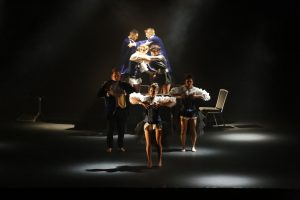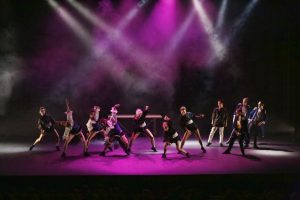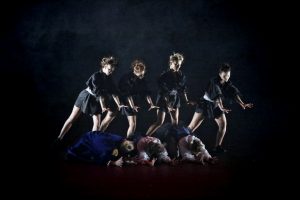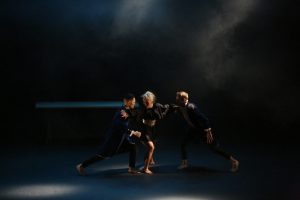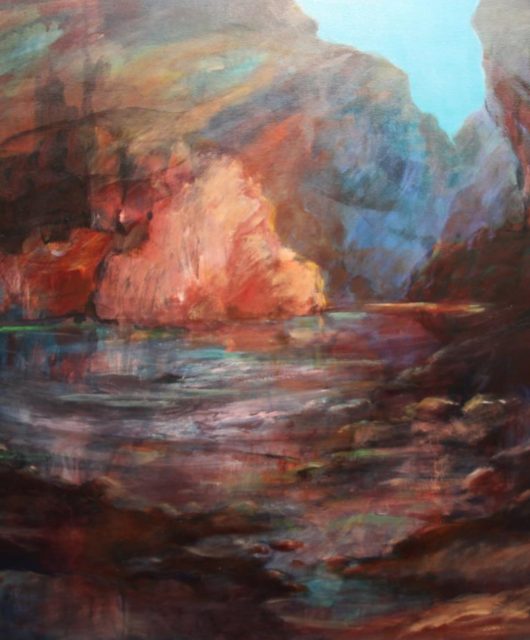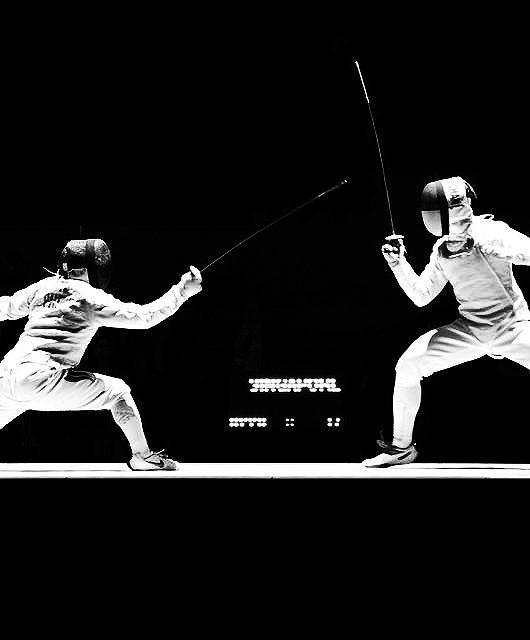In the current era of dance as an entertainment form, shows such as Dancing with the Stars or Dance Moms have become the dominant medium for general audiences. Although live performance is still appreciated, it is becoming a rarity due to the gradual decline of dance as a performing art. Dancers often find themselves in a supporting role, being backup to singers, in musicals and theatre. Gradually it becomes more and more difficult to be the main character or showcase of the piece. Shannon Tsu, founder of Dance Editorial seeks to change this current trend. With her unique, dramatic and emotional productions, the dancer becomes the main character for the audience and dance itself signals a return back to its bona fide performance.
Dance Editorial is a dance production company that has broken into the performing scene with their first production Seven Vices dating back to 2016. Its unique name represents the vision of Dance Editorial’s beginning, a media blog created by Shannon to showcase and cover the dancing scene in Australia. “Dance Editorial actually began as an editorial and I would go and cover the stories of different dancers. That’s actually how it all began”. From its simple beginnings, Dance Editorial would go on to grow into the independent dance production company that it is today. Its unique choreography process along with the dominant casting of their ingrown talent, is what differentiates their production from others. In a sense, Dance Editorial’s productions are raw with emotion along with a special edge that brings dance to its purest form, a form that speaks directly to its audience.
Their first production, Seven Vices showcased the creativity of its all-female choreographers along with the young talents from their in-house team. The recent production ‘Love is Love’ built on that in reverse fashion using all male choreographers to piece a thrilling, yet interesting story with Sydney Morning Herald calling it “smart, entertaining and unexpected”.
While Dance Editorial is very capable of creating inspiring performances, it is not their only goal. Dance Editorial prides itself on actively recruiting young and aspiring dancers across the country to nurture and train them to become the next generation. Although there is a small demand for dance in Australia, Dance Editorial has sought to improve the industry by providing an opportunity for young dancers. “There is just not enough opportunity for dancers in Australia. We are always looking for young talents and keen dancers everywhere and we want to nurture their talent and help them on the big stage.”
Tony Zhang had an amazing chat with Shannon to discuss Dance Editorial and its recent production, Love is Love.
Tony: So Shannon, please tell me more about your production style for a dance show?
Shannon: For me, when I produce a dance show, I really want to create shows that are impactful to the audience. I truly believe that as dancers we are artists and as artists, our biggest job is to tell a story. I really want all the productions and the shows I create to be about that connection from the dancers to the audience.
T: So emotion is a key in your production?
S: Definitely, I think people forget how emotive and how emotional dance can be. As you would have seen by watching the show, there was no singing, no script, it was purely dancing. The dancers were telling the story via their bodies, by their emotion, by the music. Then obviously the music and full theatrics of the emotions come hand in hand in the show and that’s what I go for when I produce and direct a show.
T: Is it challenging when creating a story purely based on dance as a basis for communication with the audience?
S: Yes definitely, when I created the script it wasn’t a written word script but it was a storybook. I created a full storybook and I used the classic Act 1 scene 2 or Act 2 scene 3. That was how I set up the storyboard because it really was about the story, although there aren’t any words. Obviously, the choreographers were given the creative freedom to interpret the storyboard and to create something unique out of the story.
T: It must have been hard having so many different choreographers?
S: It was different because I think my hardest job was keeping it all linked. I was the only one that had the full picture and the choreographers had their own individual picture. This was quite a challenge for me to ensure the integrity of the whole story, to make sure each choreographer’s story match. Each choreographer also had the challenge of matching their work with my storyline. For example, their story cannot be based on a geographic location that is different to my storyline. Everything had to be within the confines of my storyboard. They had to go out and think of the individual story and how it fits and then think of the music that fits and obviously choreograph it.
T: What is the intended key message of Love is Love?
S: I think the key message is about the expectations of ourselves and the expectations that we have of each other. For me it’s really a representation of human nature, it’s so easy for us to look from the outside and make assumptions based on the surface level of a situation but not really understand the reality of that situation and what the people is going through. Reality is not necessarily what you see and that’s essentially what the show is about, it’s about living our truth, about finding ourselves. At the end of the day, it’s simply about love. I think we need more love in this world and it’s all the different types of love we experience and it’s really a celebration of the good and bad of all of that.
T: What have you got planned for future projects?
S: There’s always things brewing, Dance Editorial has some big plans for next year. We definitely would like to revive Love is Love for next year. Do like a season two of it, which will be quite exciting for me. I was incredibly proud of every person involved with the production, incredibly proud of what we created and I would love to be able to do that again next year. Apart from that, we have pre-professional dance courses going to five cities next year. It was one city last year, three cities this year and now five cities next year. Which is super exciting, as we are constantly expanding our reach for young minds out there, to bring some mind and soul to everything that they do, through what we know best – dance.
You can find out more about the Dance Editorial’s story in Issue 3 of the ECX Magazine.

Journo for ECX Magazine

